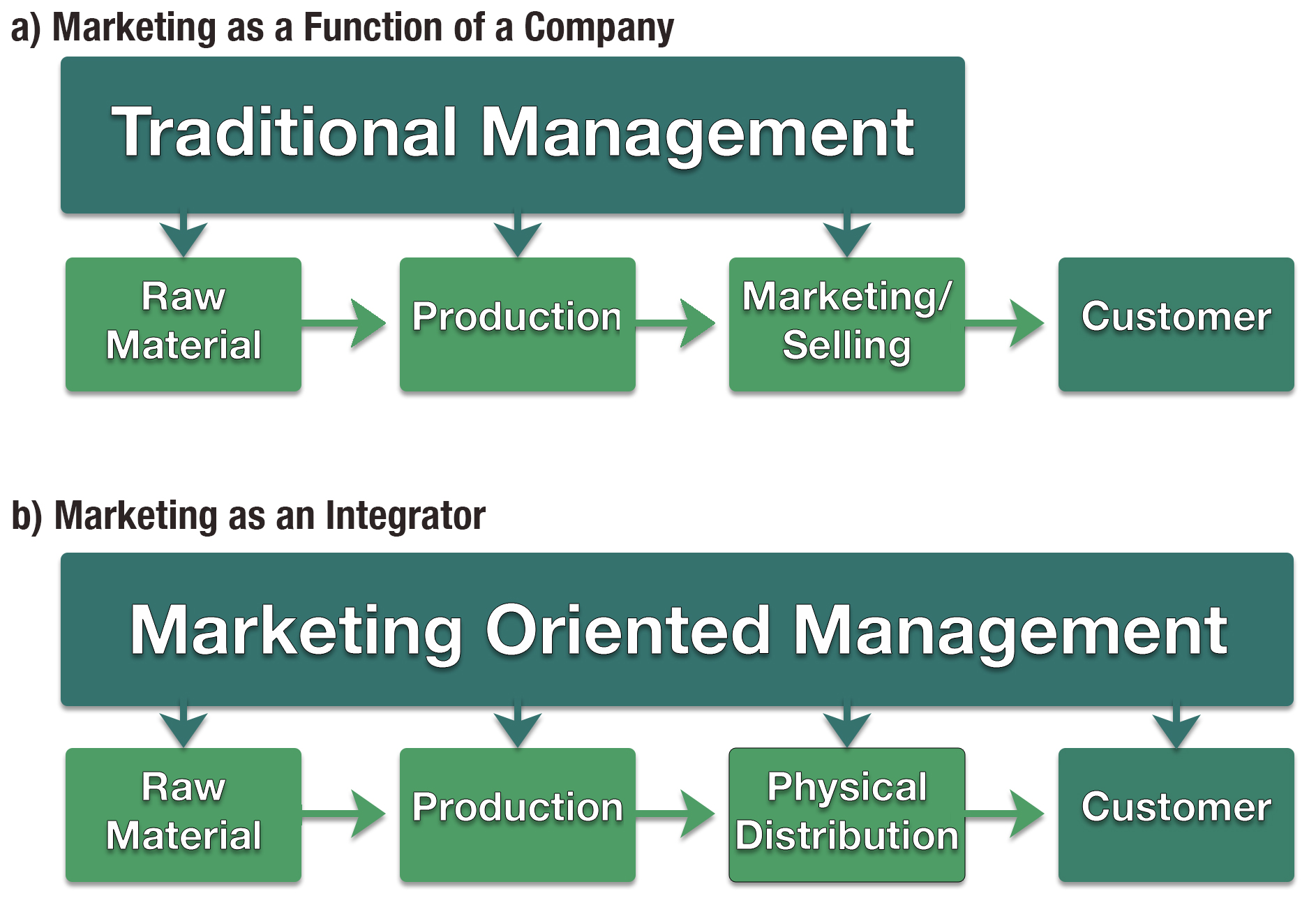1.2 Marketing and its Functions
After reading this section, students should be able to …
- Explain the various roles of marketing in an organization.
- Apply the concept of value to business situations
In free market economies, marketing is a tool for satisfying the needs of society. It provides the link between the production taking place in a company and the demand of the individual consumer. Marketing integrates the company’s various functions to target specific markets in order to best meet the needs of customers. Marketing also helps to create relationships with those customers and other stakeholders.
Marketing clearly is more integral than most people think. It is more than advertising or personal selling, two of the most visible tools of marketing. It has also changed over time, and will continue to evolve and adapt to changes in the business environment. Many of these developments are documented in the pages and chapters that follow. We feel that understanding marketing is best accomplished by a planning and modeling approach.
1.2.1 Possible Roles of Marketing
In modern society, production and consumption are separated, and marketing acts as a bridge, or integrator, between the two. Marketing can integrate the various functions of a company, connecting the company to its customers and its other stakeholders. Figure 2-1 describes marketing’s role as a connector and relationship builder.

Marketing as a connector – Traditionally, marketing was the link between production and consumption, coordinating the integration of the two functions. At a company level, marketing connects the production of the company with the needs of the customer.
Marketing as a relationship builder – Marketing can serve to build and maintain relationships among the company, its customers, and other stakeholders. In modern marketing, this role is critical. “Relationship marketing,” a term popularized in the early 90s, suggests the importance of positive relationships with a range of stakeholders. The concept is an integral part of advanced marketing and successful business.
Marketing can have either a narrow, functional role in an organization (i.e., that of “selling”), or it can have a broad, integrating role. The difference between the two roles can be seen in Figure 2-2.
Marketing as one function of the company – The narrowest possible role for marketing is as one of the company’s functions between production and the marketplace. From this perspective, the role of marketing is to assure that products are efficiently transferred to the market. In this context, marketing is limited to selling.
Marketing as the integrator of company functions – In its more sophisticated implementation, marketing has an integrative function focused on the entire value chain, from the forest to the end user. It allows an organization to align its various processes to offer products and services in a way that is beneficial to itself and its customers.

In practice, marketing can play all of the above-mentioned roles. In fact, marketing should serve to connect the company to its environment, allow it to develop a better understanding of markets and customer needs, and convert this understanding into business opportunities. Marketing should integrate the company’s functions and divisions into a customer-serving entity, ensuring fluid transfer of products and services to end-users.
The science called marketing has evolved from a series of other behavioral sciences including psychology, social psychology, sociology, communications, and economics. While it may seem simple to define, the term “marketing” is both broad and complex, with many possible interpretations. As the field of marketing develops, so does its definition. Early definitions were centered on the concept of the transaction, while today, definitions of marketing typically involve relationships, and elements of social and environmental responsibility.
University students, industry managers and ordinary consumers often have a narrow understanding of the concept of marketing. Typically, marketing is associated with its most visible functions, such as advertising and selling. However, advertising and selling are merely tools of marketing. A simple definition of marketing is identifying and providing for the needs of customers in order to gain a profit. For the purpose of this book, we describe marketing in the context of a planning approach.
Marketing constantly produces information about the environment of the company (especially customer needs, market trends, and demand). Based on this information, marketing strategies, structures, and functions are planned. Marketing strategies are composed of definitions of products to be produced, customers to be served, and core competencies to be pursued. Marketing structures (e.g., marketing organization, marketing channels and information systems) facilitate necessary relationships as well as the planning and implementation of marketing. Marketing functions are the tools and activities used to execute marketing strategies. After proper planning, marketing is simply execution of the strategic marketing plan.
Source:
Section 1.2 Marketing and its Functions is edited and adapted from ‘Chapter 2: Understanding Forest Products Marketing’ from the textbook ‘Strategic Marketing in the Global Forest Industries – Third Edition,’ authored by Eric Hansen & Heikki Juslin, 2018 – this book was licensed under a Creative Commons Attribution-NonCommercial 4.0 International License.


